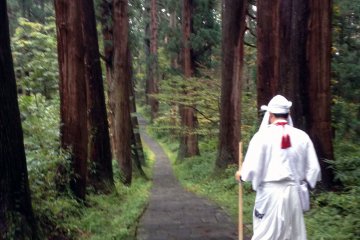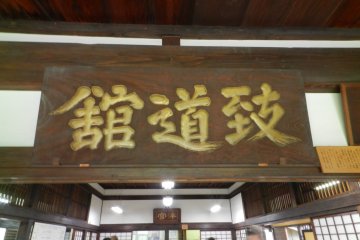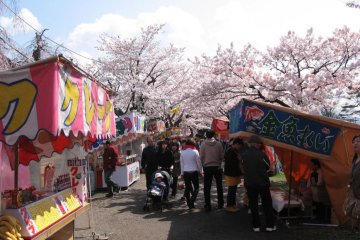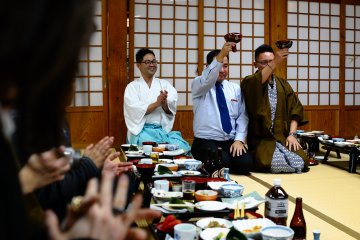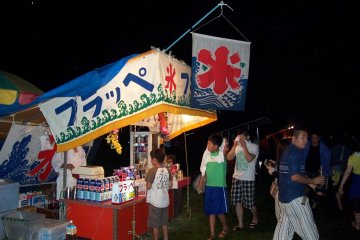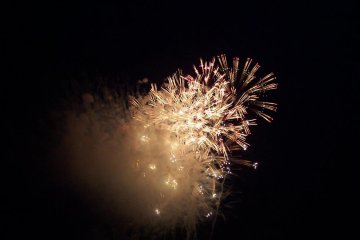Summer in Tsuruoka means relaxation on Yunohama Beach, numerous festivals and...lots of fireworks!
Every year in August, the city welcomes more than 25,000 people to the banks of the Akagawa River near the Haguro Bridge for its spectacular hanabi (fireworks festival). First held in 1991, the Akagawa Hanabi attracts visitors from all over Yamagata Prefecture.
And they never leave disappointed. Outstanding pyrotechnicians and a staff of about 400 people work to produce a marvelous spectacle in which roughly 12,000 explosions entertain spectators for an hour and a half. Not only do the fireworks thrill thousands, they compete to win the contest for best design. The festival even has its own motto: "Messages from the sky to a bright future."
Long a symbol of the Japanese summer (it originated in the Edo period and the first edition sought to repel evil spirits and comfort the souls of the dead), the hanabi also serves as a great occasion to bust out any traditional Japanese piece of clothing—such as a kimono, yukata, or jinbei—that you haven't worn in a while. Not only many people are decked in such attire, they have the chance to grab a delicious bite or two as numerous stands sell common traditional Japanese festival foods...
At an occasion that has become a summertime nocturnal version of Japan's popular hanami (cherry blossom viewing festival). Large numbers of families, friends and work colleagues stake out areas on the grass where they chat, munch on some goodies and drink beer.
However, if you can't make it to the banks of the Akagawa, don't despair. You can hear all the fireworks on the Yamagata Broadcasting Company's radio station.
For one summer night, Tsuruoka isn't the small, sleepy town it appears to be.
Practical information:
- Starting from 6:45 p.m., you are allowed to claim a spot on the grass to watch the fireworks.
- The first fireworks usually go off at around 7:15 p.m.
- Although the city of Tsuruoka has established parking areas for those attending the festival, it is highly recommended to cycle where large groups have gathered for the hanabi.



